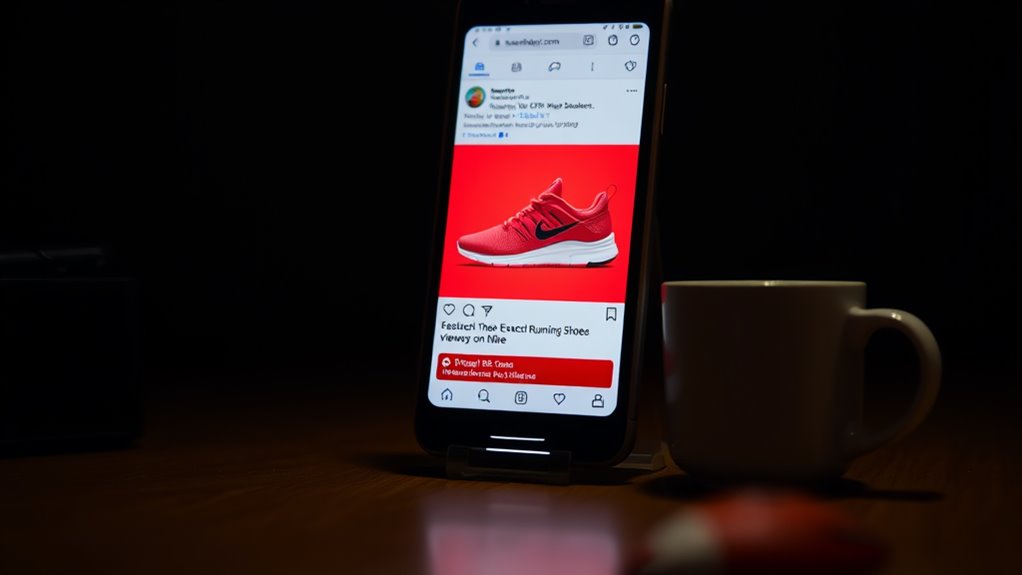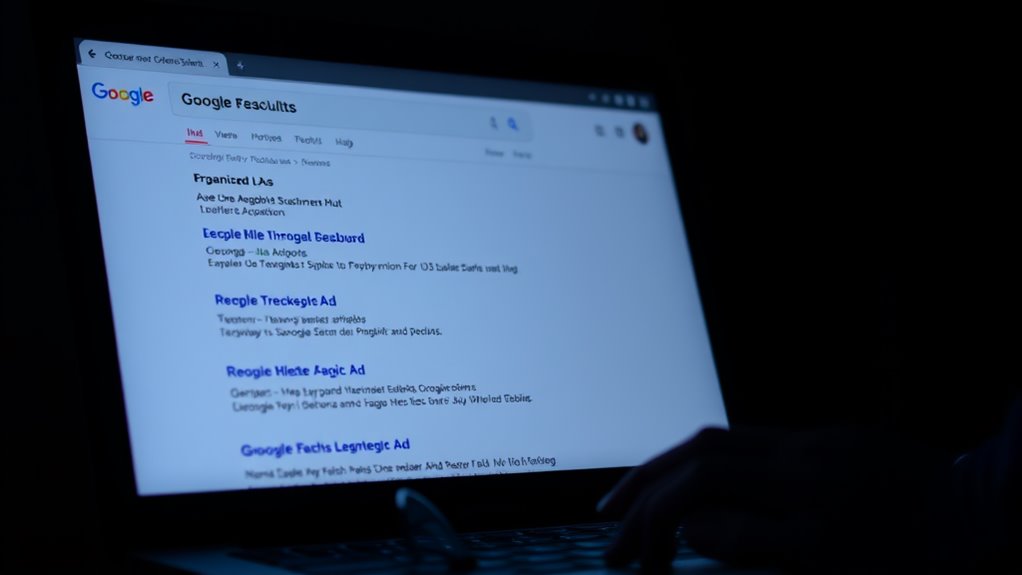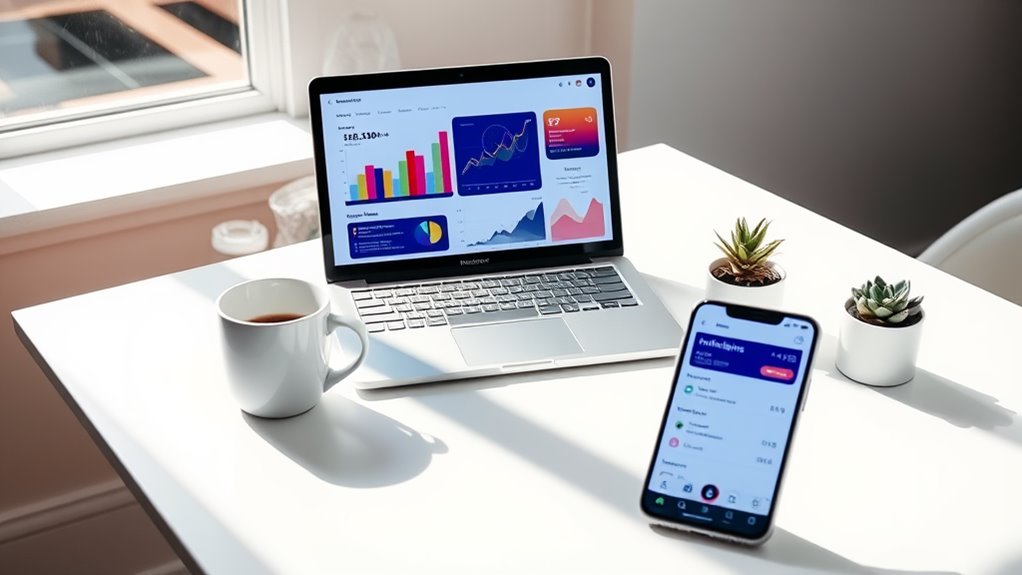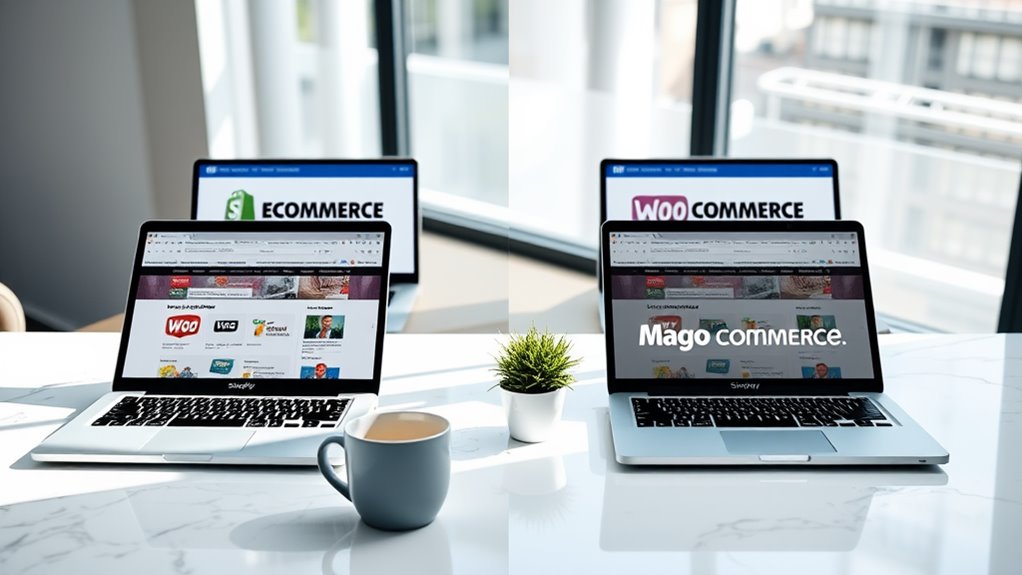Google Search Ads represent one of the most widely-used examples of pay-per-click (PPC) advertising, where you'll only pay when someone clicks on your ad. These ads appear at the top and bottom of Google's search results pages, triggered by specific keywords you've bid on. You can expect click-through rates between 2-5%, with ads consisting of attention-grabbing headlines, compelling descriptions, and relevant URLs. While Google Search Ads typically require a higher cost-per-click investment compared to other platforms, they often deliver strong conversion rates due to their precise targeting capabilities. Understanding additional PPC platforms can help maximize your advertising impact.
Key Takeaway
- Google Search Ads appear at the top of search results, where advertisers pay only when users click on their advertisements.
- Facebook PPC advertising allows businesses to target specific audiences based on demographics and interests, charging per click received.
- Display Network ads show visual content across millions of websites, offering a cost-effective way to reach 90% of global internet users.
- Shopping campaigns transform product catalogs into visual ads, ideal for e-commerce businesses showcasing their products with images and prices.
- Retargeting ads follow visitors across different websites, showing them relevant products they previously viewed on your site.
Google Search Ads
Google Search Ads represent the most popular form of pay-per-click advertising, appearing at the top and bottom of search engine results pages. When you create these ads, you'll bid on specific keywords that your potential customers are searching for, making them highly targeted and effective for your marketing goals.
Key Components of Google Search Ads:
- Headline text (up to three 30-character headlines)
- Description lines (two 90-character descriptions)
- Display URL and final destination URL
- Ad extensions (location, call buttons, site links)
Your ads will trigger based on:
- Keywords you've selected
- Match types you've chosen
- Bid amounts you've set
- Quality Score of your ads
To maximize your Google Search Ads' effectiveness, you'll need to:
- Research relevant keywords thoroughly
- Write compelling ad copy that matches search intent
- Create targeted landing pages
- Monitor and adjust your bids regularly
- Test different ad variations
You'll only pay when someone clicks on your ad, making it a cost-effective way to drive targeted traffic to your website. With proper optimization, you can achieve click-through rates of 2-5% in most industries.
Facebook Pay Per Click
Facebook Pay Per Click offers a powerful alternative to search-based PPC by letting you target users based on demographics, interests, and behaviors rather than keyword searches. You'll find robust targeting options that allow you to reach specific audience segments based on:
- Age, gender, and location demographics
- Professional roles and education levels
- Hobbies, shopping behaviors, and lifestyle choices
- Connection types (mobile, desktop, specific devices)
When creating your Facebook PPC campaign, you'll need to select from several ad objectives:
- Awareness: Brand recognition and reach
- Consideration: Traffic, engagement, and lead generation
- Conversion: Store visits and online purchases
Your ad costs will vary based on your targeting choices and competition levels, with typical costs ranging from $0.50 to $2.00 per click. To optimize your campaign's performance, you'll want to:
- Monitor your Relevance Score to guarantee ad effectiveness
- Test multiple ad formats (image, video, carousel)
- Adjust bidding strategies based on performance data
- Regularly refresh creative content to prevent ad fatigue
Facebook's detailed analytics dashboard helps you track metrics like click-through rates, conversion costs, and audience engagement, allowing for data-driven optimization of your campaigns.
Display Network Advertising

While social media platforms like Facebook emphasize user behavior targeting, Display Network Advertising broadens your reach across millions of websites, apps, and digital properties. Through platforms like Google Display Network, you'll showcase your visual ads to potential customers while they're browsing their favorite websites, watching YouTube videos, or checking their Gmail.
Display advertising lets you target audiences based on their interests, demographics, and browsing behavior. You'll find that these ads typically cost less per click than search ads, making them an efficient choice for building brand awareness and reaching new audiences at scale.
Key benefits you'll gain from Display Network Advertising include:
- Access to over 2 million websites and reaching 90% of global internet users
- Visual engagement through various ad formats, including images, videos, and rich media
- Precise audience targeting using demographics, interests, and remarketing lists
- Real-time performance tracking and optimization capabilities
You can start with a modest budget and scale up as you see results. With Display Network Advertising, you'll pay only when users interact with your ads, making it a cost-effective way to expand your digital presence and drive qualified traffic to your website.
Shopping Campaign Examples
Shopping campaigns transform your product catalog into visually appealing ad formats that display directly in search results. When you create a shopping campaign, your products appear with essential details like price, image, title, and store information, making it easier for customers to make informed purchase decisions.
Key Components of Shopping Campaigns:
- Product feed optimization with accurate titles, descriptions, and GTINs
- Strategic bidding based on product groups and categories
- Custom labels for seasonal promotions and profit margin-based adjustments
- Location targeting to reach specific geographic markets
Best Practices for Success:
- Structure your product groups by brand, category, or price point
- Maintain high-quality product images (at least 800×800 pixels)
- Update pricing and inventory regularly to avoid disapprovals
- Monitor search term reports to identify valuable customer queries
You'll need to connect your Google Merchant Center account to your Google Ads account to run shopping campaigns effectively. By analyzing performance metrics like ROAS (Return on Ad Spend) and conversion rate, you can adjust your bidding strategy to maximize profitability across different product segments.
Retargeting PPC Ad Models

Retargeting PPC campaigns leverage visitor behavior data to reconnect with users who've previously interacted with your website, app, or content. This powerful advertising model enables you to display targeted ads to potential customers across different platforms and websites, increasing your chances of conversion.
Key Benefits of Retargeting Models:
- You'll reach warm leads who've already shown interest, resulting in conversion rates up to 70% higher than standard PPC
- Your ads will display dynamically across the Google Display Network, reaching users on millions of websites
- You can segment audiences based on specific actions, such as cart abandonment or page visits
- Your campaign costs typically remain lower since you're targeting pre-qualified prospects
To implement effective retargeting, you'll need to install tracking pixels on your website and set up custom audiences in your ad platform. You can then create tailored messages that address specific user behaviors, such as offering discounts to those who've abandoned their shopping carts or showcasing related products to past purchasers. By focusing on these warm leads, you'll typically see a significant improvement in your return on ad spend (ROAS) compared to traditional PPC campaigns.
Conclusion
Pay-per-click advertising remains one of your most powerful digital marketing tools, with Google Ads alone reaching over 90% of global internet users. You'll find that whether you're running search ads, Facebook campaigns, or display network promotions, PPC offers measurable results and scalable growth potential. By implementing strategic targeting and monitoring your metrics closely, you can maximize your ROI while maintaining control over your advertising budget.









